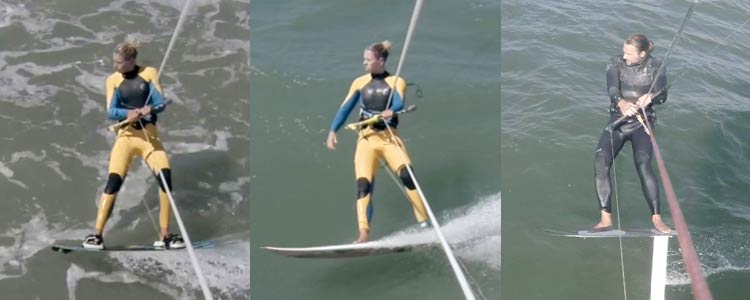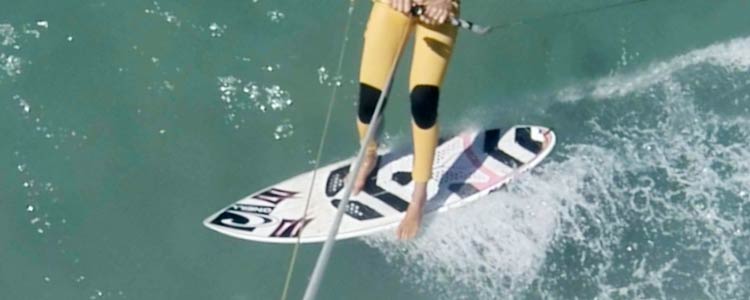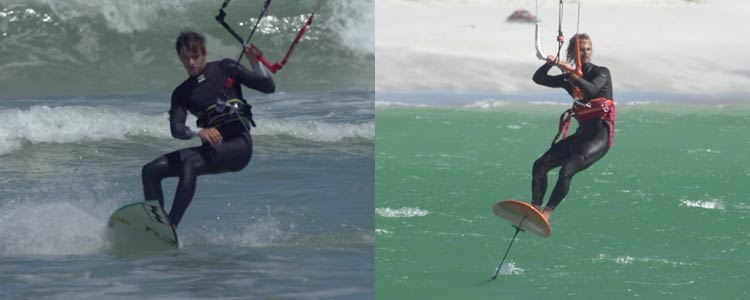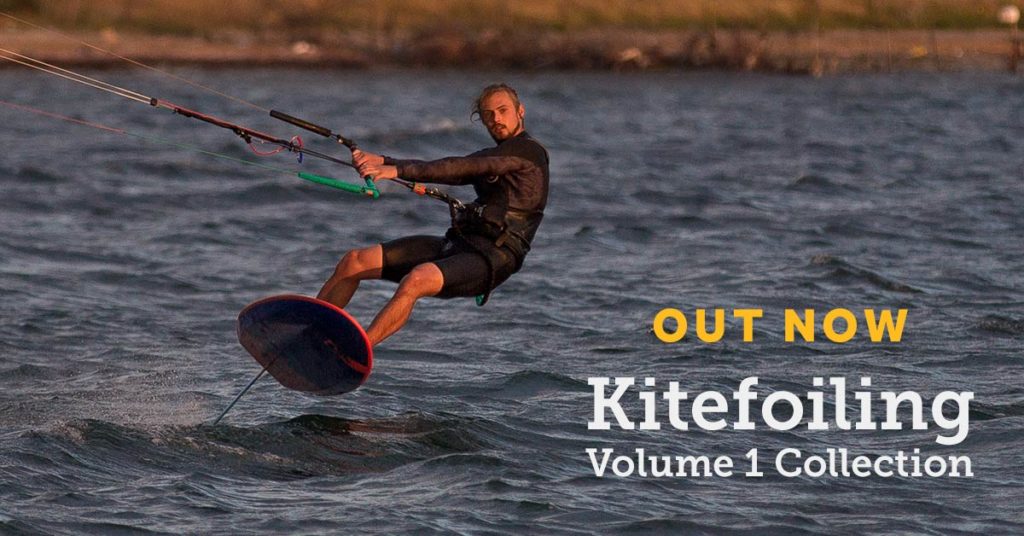Are you thinking of learning to foil this summer? Maybe you’ve started but are still working on the basic skills? If so one of the best ways to get yourself ready to learn to ride a hydrofoil is to first ride a surfboard, and better still, strapless.
Having watched and spoken with many people learning to hydrofoil with a kite, it’s obvious to see that those that have experience riding a surfboard progress faster and have a more enjoyable start to their foiling progression. That’s not to say you can’t go straight from a twintip to a hydrofoil, especially with some of the newer beginner foils coming on the to market, but you may find it harder and get more frustrated with your first session as you try to understand this new technique your body needs to master.
Read on if you want to understand why riding a surfboard will help and what to practice to speed up your hydrofoil progression…

1. Understanding Weight Distribution
The biggest advantage surfboard riders have over twintip’ers is being less dependant on back foot pressure.
- On a twintip you control power and speed by driving off your back foot.
- On a surfboard your weight is more balanced between your feet and you can put lots, or all of your weight over your front foot when needed.
- On a hydrofoil, front foot pressure is essential, it’s hard to express just how fundamental a change of stance it is. It keeps the board in the water when you are first learning and then it’s what keeps the board balanced on the foil as you rise out of the water.
Training your body to overcome the in-built twintip stance, that you have relied on for years, is really hard. It’s why you see so many people learning to hydrofoil with the board flying out of the water like some kind of sea creature trying to take flight.
Riding a surfboard is a great in between stage, allowing you to play around with your weight distribution and start training your body to be happy with weight over your front foot.
Homework:
- Ride your surfboard slightly underpowered, this will put more weight on the board.
- If you’re using straps, ensure you take your back foot out of the strap, and place it further forward. This will stop you reverting to back foot edging and allow you to easily experiment with more weight over your front foot.
Check out our Riding and Control Collection for help with all your basic surfboard skills.

2. Try Strapless
Riding strapless on a surfboard will speed up your understanding of front foot pressure even quicker. Straps allow you to be less precise with your weight distribution, getting you out of trouble if your weight drifts back at the wrong moment. Lose the straps and there are no excuses or hidden issues, you’ll quickly have to learn to keep your weight forward or you’ll come off more regularly than you might imagine.
Homework:
- If you new to strapless, start just riding around in flatter water, staying in control at speed
- Try riding with your body more upright over the board, much what you’ll do on your first runs on a hydrofoil.
- Try moving your feet around – start with your back foot and see how different positions affect your speed and control. Try stepping forward and riding with your feet together, all your weight in forward on the board.

3. Gybing and Carving Turns
On a twintip a carving turn requires you to edge hard though the turn. You’ll quickly learn on a hydrofoil your board and kite control needs to be far more delicate and precise. A surfboard with its extra volume, longer rails and larger fins allow you to practice more gentle gybes and once again with that all important front foot pressure. Toeside riding and the foot change when gybing all follow on directly from those on a surfboard.
Homework:
- Gentle carving turns starting heelside and coming out on your toeside. Aim to come out with speed and your kite following a smooth path throughout.
- Practice carving turns using a downloop of the kite through the turn. This is a key skill on a hydrofoil, ensuring the kite can keep up with the foil in lighter wind sessions.
- Practice changing your feet from heelside to toeside and back. Trying speeding up the foot change and ensure the board maintains a constant speed and direction the whole time.
Check out our Carving Turns Collection for help with all aspects of gybes and powered carving turns on a surfboard.

4. Tacking
There isn’t a comparable technique to tacking on a twintip and though you can learn to do it from scratch on a hydrofoil it will be far harder than on a surfboard. So any practice you can do on a surfboard will help you with your foiling tacks. Don’t worry if you can tack as this won’t stop you from starting to foil but it’s worth bearing in mind if you struggle with tacking and want to improve quicker.
Both the regular and duck/roll tack are possible on a hydrofoil but the duck tack is probably the foiling tack that is easier to completely and stay on the foil throughout.
Homework:
- There aren’t any shortcuts for tacking, you just need to get out there and start learning them on your surfboard.
- You’ll definitely find it easier when powered up and on flatter water
As you can see there is plenty you can learn on a surfboard to prepare you and speed up your progression on a Hydrofoil. Our Progression Kitesurfing Volume 1 Collection can help you with all these surfboard skills or check out these two other hydrofoil blog posts that might be helpful:
If you have any questions about learning to foil, ask away in the comments below or email me directly.
The Kitefoiling Volume 1 Collection is now available and has everything you need get up and riding on the foil. Its available to stream here on the Progression website or to download through the Progression app for iOS and Android. Finally, kitefoiling is open to any kiteboarder with basic kite skills and up for the challenge!
